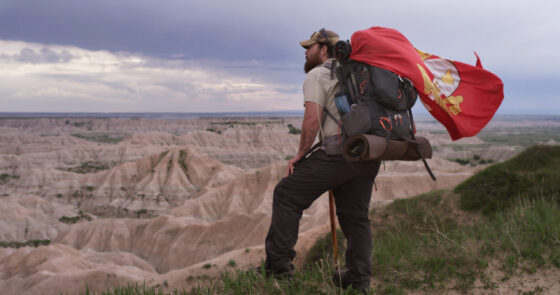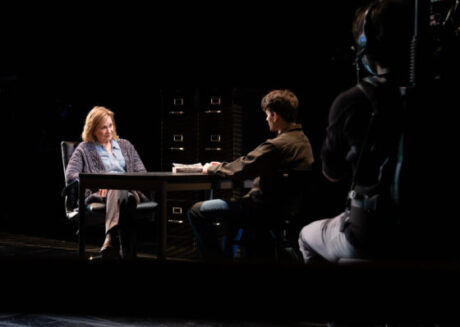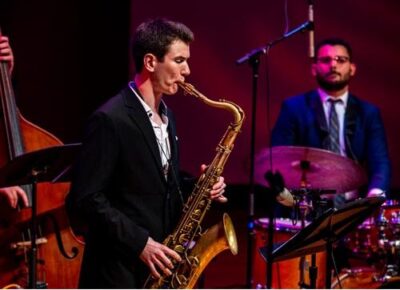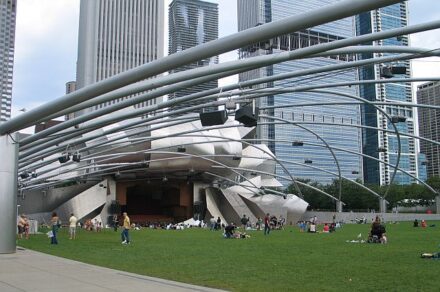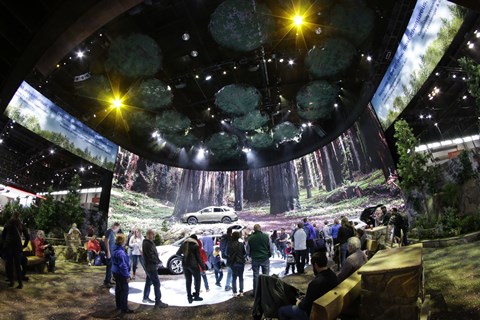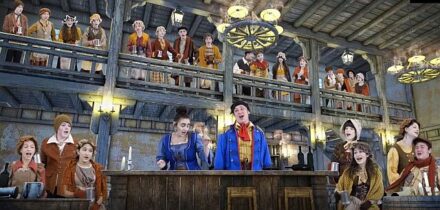
Stacey Flaster and Liz Fauntleroy, founders of Highwood, IL-based The Performer’s School, had their 40-member cast set for Les Miserables and 26-member cast for Disney’s Beauty and the Beast Jr. when Covid-19 shut down stages and venues everywhere including Ravinia Festival where they put on one of their shows.
“We didn’t know how long the quarantine would last but the kids had signed on,” said Flaster.
In addition, their staff orchestrator, editor, costumer and props people were still working on the shows and still hoped to do Les Mis and Beauty.
“So, we had to do something,” said Fauntleroy.
The something was to ask Peter Marston Sullivan, associate artistic director of Marriott Theatre and founder with wife Elizabeth Telford of the new, digital production company Marston McCoy Media, to turn the two musicals into digital productions where everyone looked as if they were performing at one time on the same stage.
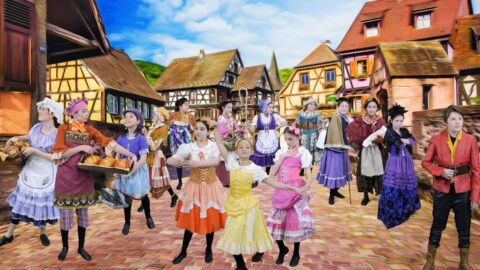
The kicker was that everyone couldn’t be filmed at once. CDC and Illinois Covid protocols meant keeping everyone safe with separate rehearsals, separate costuming, separate dance moves and separate singing, but it all had to look like one show, one backdrop, one taping.
Sullivan had already been working with them on workshops and knew they needed a way to present the musicals.
In 2020 Elizabeth and I sat in our basement to experiment. We didn’t want something as bland as zoom. Then Elizabeth, sang “One Day More” for a demo to show what is possible,” said Sullivan explaining that his wife, Elizabeth Telford, was a musical theater performer who had done several shows Marriott and around Chicago.
“I sent to The Performer’s School. They said they were thinking of doing Les Mis. So we all took a risk,” he said.
“Peter came to us and said he had this idea on how to make it happen,” said Flaster. She added, “We were willing to take a chance. So we all just dived in.
“We presented it to the students. They all said yes!” said Fauntleroy.
The students involved are 26 fourth and fifth graders in Disney’s Beauty and the Beast Jr. and 40 sixth through eighth graders in the school edition of Les Miserables.
What comes across when watching either of the completed productions is that the youngsters could easily go on to post college or academy careers in musical theater. Past Performer’s School students have performed on Broadway, in regional theaters and commercials.

Flaster and Fauntleroy, explained that talent agencies, casting directors and local theaters often ask the school to suggest students for particular shows and roles.
The two school founders are themselves, veterans of Chicago area musical theater who then went on to teach workshops before founding their school eight years ago.
They noted that some of the students just enjoy performing while others are very talented, have agents already and often go on to related fields in college.
The back story is that after a few months of experimentation and six months of multiple takes of each cast member in front of the type of screen similar to one used by TV weather forecasters, the results were two astounding productions.
“It’s not like zoom. It’s a cinematic experience,” said Flaster.

Sullivan explained the process as “long” “complicated” and “layering.”
“We record the performers individually in front of a green screen then edit that so they appear to be together,” he said. “There are multiple takes with each kid, then they are cut out and all put together so then when we animate it feels like a movie.”
He added, “My wife had the great idea to have them looking where they would in a scene. So, in one take Jean Valjean would be looking left toward Marius (Pontmercy) who would be looking right in his take.”
He then edits the tapes and stacks them one behind or in front of another. “It’s hard. ‘One Day More’ took two weeks to edit,” he said. Then added, “The battle scene is amazing. It’s really layered editing, like animation.”
Sullivan said kudos had to go to TPS Music Director/editor Jeff Poindextor, “The orchestral track was all done at Marriott’s large rehearsal warehouse,” and to other staff of The Performer’s School who worked on the project.
“It’s hard, but what you see is cool. People will see what is possible,” said Sullivan. “And what was done with the students is amazing. They learned a whole different medium. The shows were perfect for film and the kids see themselves as movie stars. They’re glowing.”
For performances and ticket information visit The Performer’s School
To see about making the show and a teaser visit YouTu.be.
Jodie Jacobs

